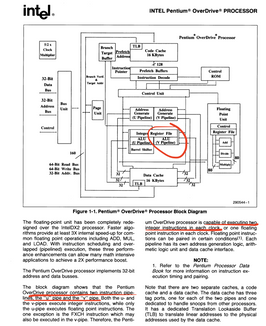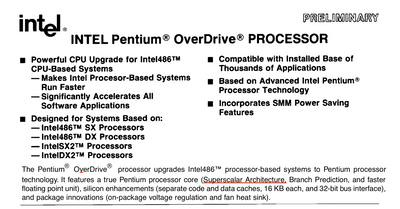First post, by jasa1063
- Rank
- Oldbie
I was reading an article about the Pentium Overdrive for 486 Socket2/3 systems and came across this interesting item:
https://www.os2museum.com/wp/intel-overdrive- … tium-overdrive/
A little-publicized fact is that the PODP is in reality not a superscalar processor because the second pipe (V-pipe) is permanently disabled. This can be seen by attempting to force single-pipe execution (U-pipe only) by setting bit 2 of TR12 (MSR 0Eh). The PODP does not react to the setting, while disabling cache or the BTB through TR12 does have noticeable impact—and likewise, disabling the V-pipe through TR12 on a regular Pentium visibly slows things down.
So, my question is this in fact the case with this CPU?

